
The most delicious raspberry recipes all start with the same ingredient – ripe, red, juicy, freshly harvested berries.
But not just red!
Did you know that raspberries grow in more than one color? At home, you’ll also be able to grow unique varieties in shades of yellow, pink, purple and black.
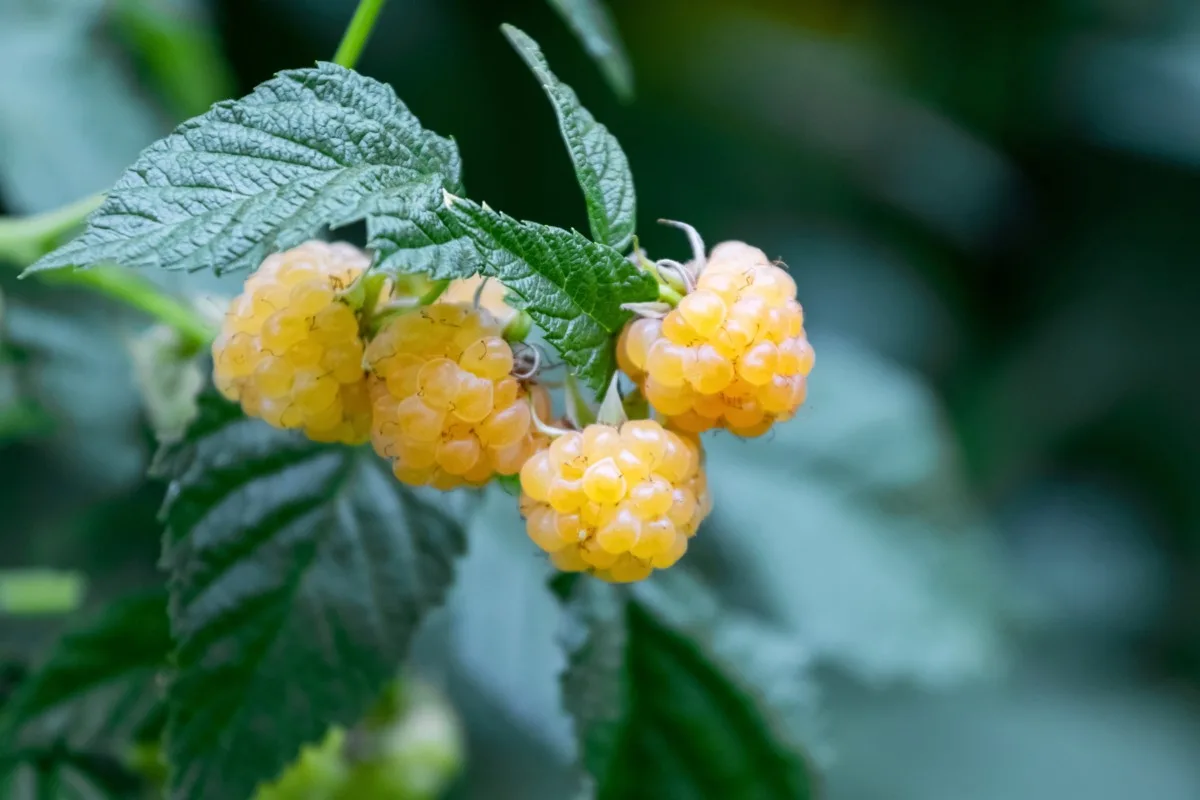
And if you plant a medley, you’ll be able to harvest a colored melange that livens up any summer barbecue or picnic. Can you imagine the July fruit platter already? Apricots, blackberries, blueberries, late-ripening cherries, gooseberries and peaches, sprinkled with an array of ripe raspberries. Use your imagination to bring that reality nearer to your taste buds. Then get to work in the garden.
Somehow raspberries taste best when foraged in your own backyard. All homegrown produce tastes better than store-bought, perhaps because you grew it and tended to it.
So, let’s tend to those secrets, to get you closer to your best ever raspberry harvest.
Read on to unlock the 7 secrets to getting the most out of your bountiful backyard raspberry harvest.
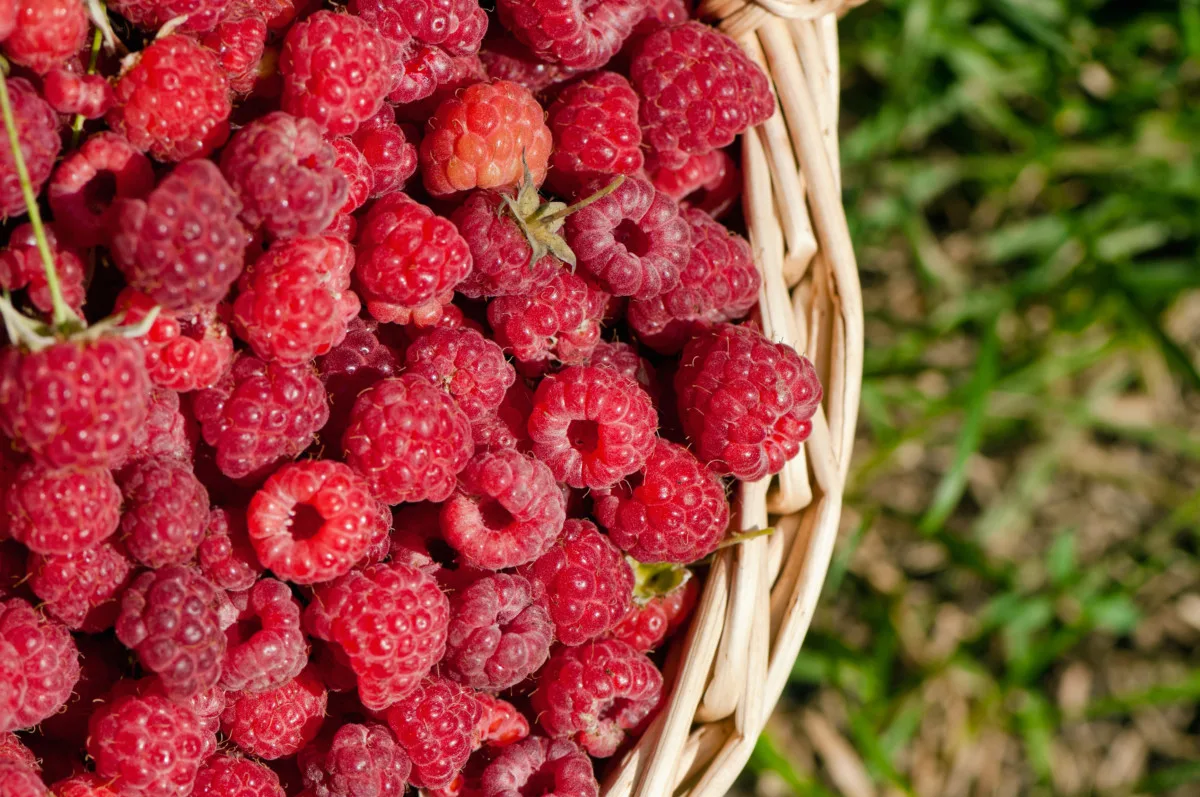
If you’re lucky, you’ll even be able to stock several jars of homemade raspberry syrup or raspberry jam in your pantry, so you can enjoy the delicious flavor of summer all winter long.
1. Prune Your Raspberry Canes
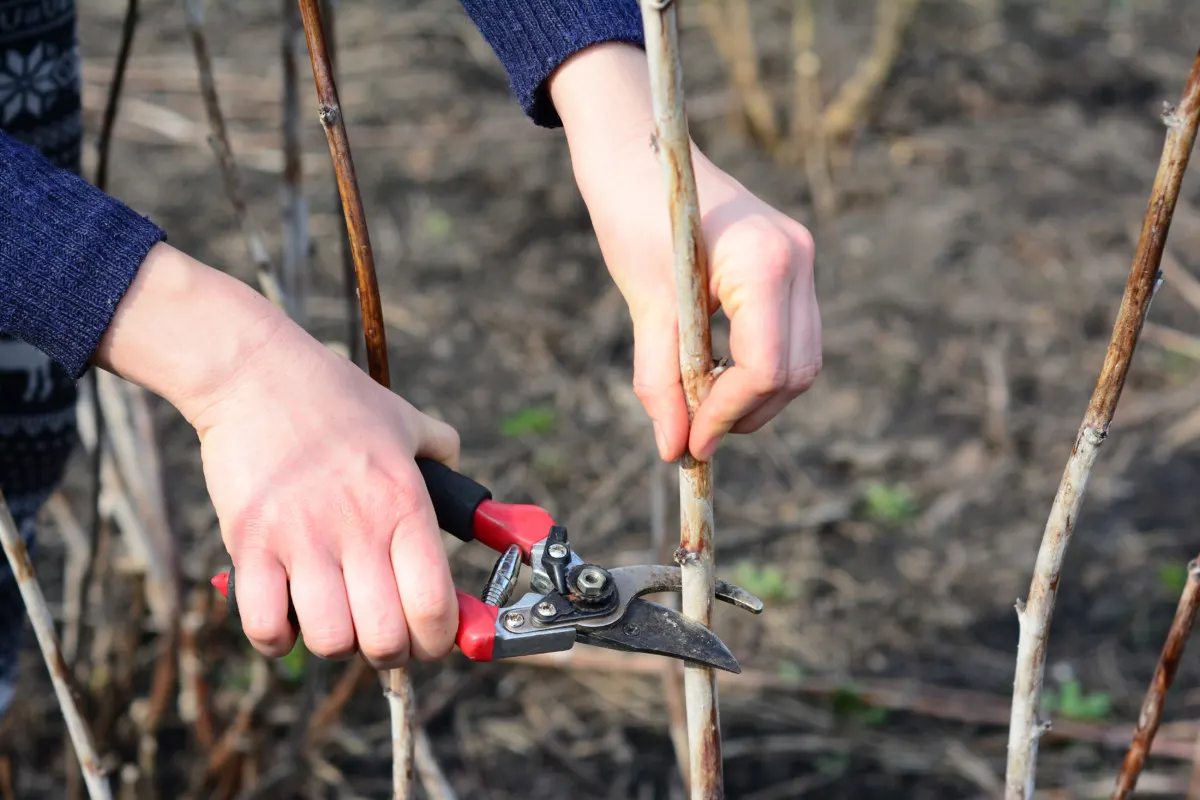
Pruning doesn’t have to become a difficult job. Here it’s important to know whether your raspberries are summer-bearing or fall-bearing.
Pruning summer-bearing raspberry canes
Pruning techniques may vary by variety, so it’s always good to know what you are growing. Here are 13 of the best raspberry varieties to grow.
If you know for sure that your canes are bearing fruit in summer, the best time to prune them is in early spring. Remove old canes, thinning them out to a distance of 6″ apart, pruning the tips of any that have suffered from the cold.
After the summer harvest, you can prune all the old fruiting canes back to the ground.
Pruning fall-bearing raspberry canes
All you have to do with fall-bearing canes, is to cut the canes off at ground level after the autumn harvest, before the new growth arrives in spring. Late winter is the best time for pruning primocanes (see secret #5 below to find out what a primocane is).
Or, you can aim for a double crop of raspberries by leaving some of the strongest canes, trimming them to about 3′ in height. Then cutting the rest back to ground level.
Don’t let the patch become overgrown.
If you get a little lazy and forget to thin out the canes in your raspberry patch, or simply put it off till next season, you run the risk of fewer berries.
That’s getting away from your goal of your best ever raspberry harvest. While excusable in the grand scheme of life, an overgrown berry patch is less pleasurable to harvest from.
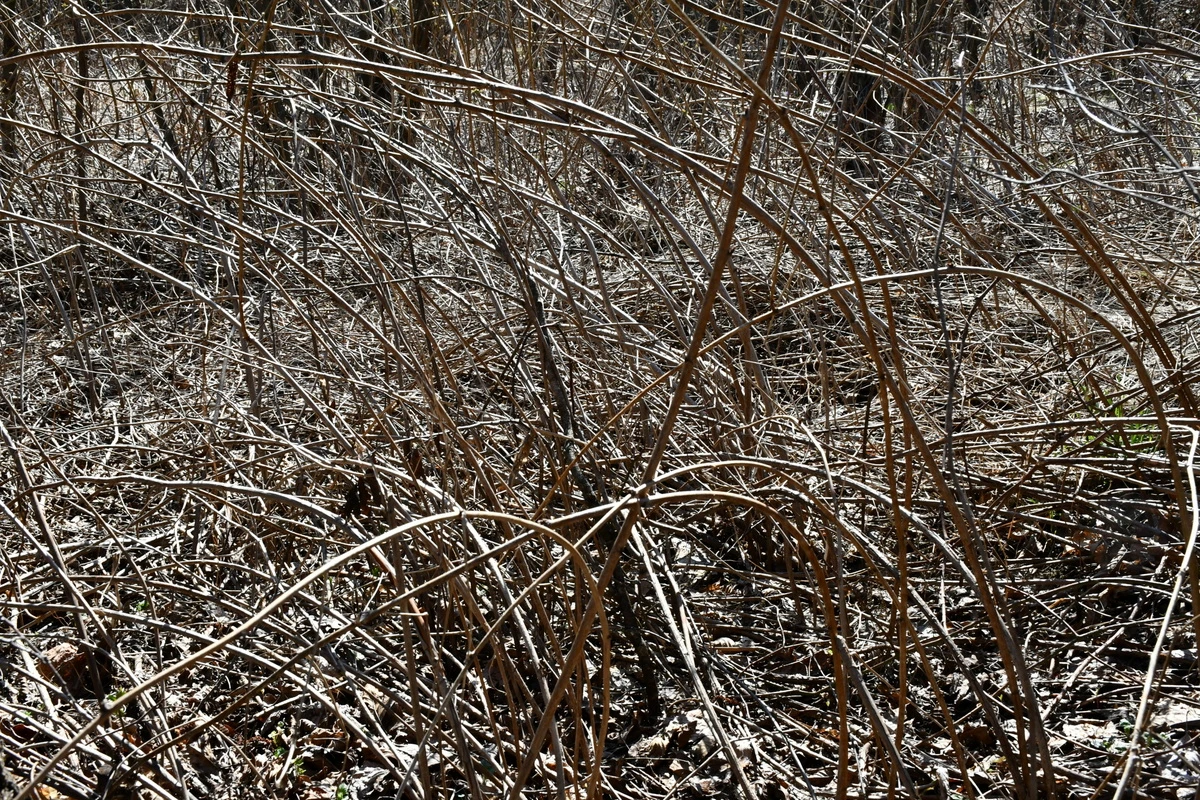
For starters, a sea of dead canes will get in the way of new stems that wish to pop up from the ground. At the same time decaying stems block light and compete with young canes for water and essential nutrients.
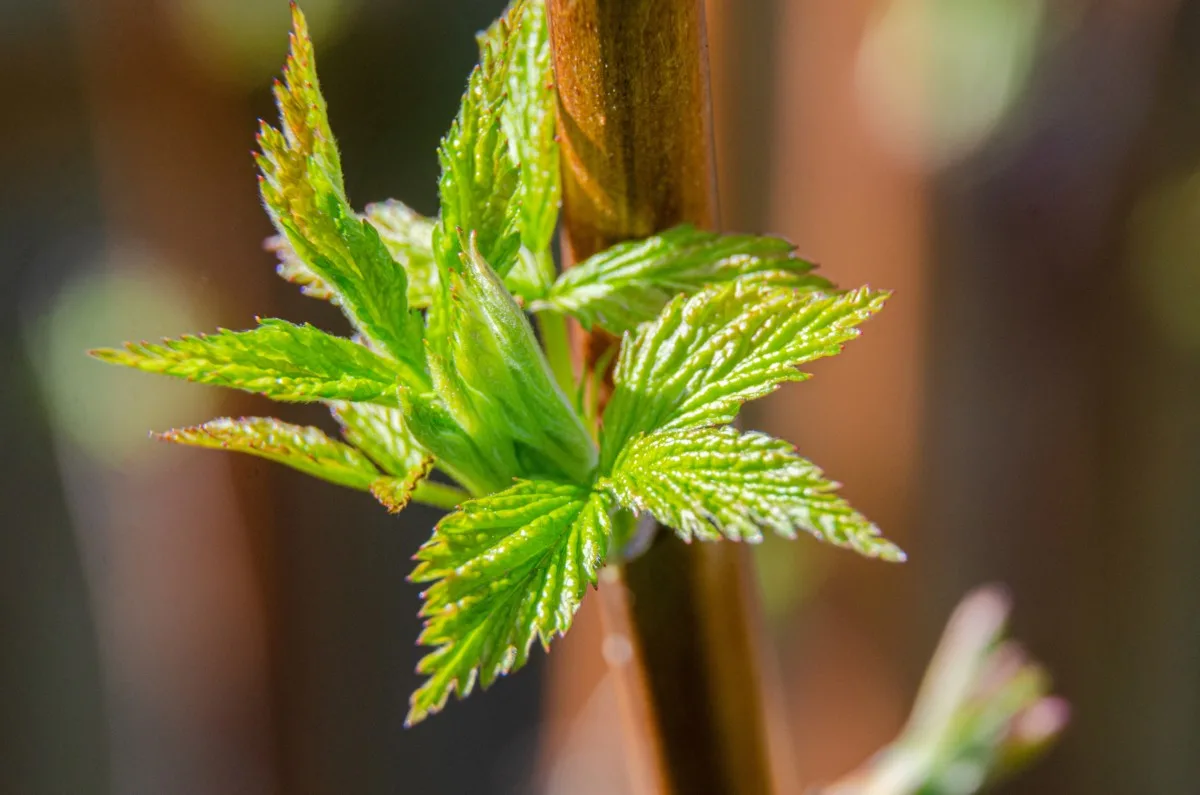
Make time for an annual raspberry pruning and your chances of a bountiful harvest will be well underway.
2. Replant Raspberry Suckers
While you may want to start your raspberry plants with canes with a specific variety from a nursery or garden center, there will come a time when they start to give back. That is, if you know what to look for.
Instead of rebuying new canes, you can simply wait for suckers. Then replant them when the time is right.
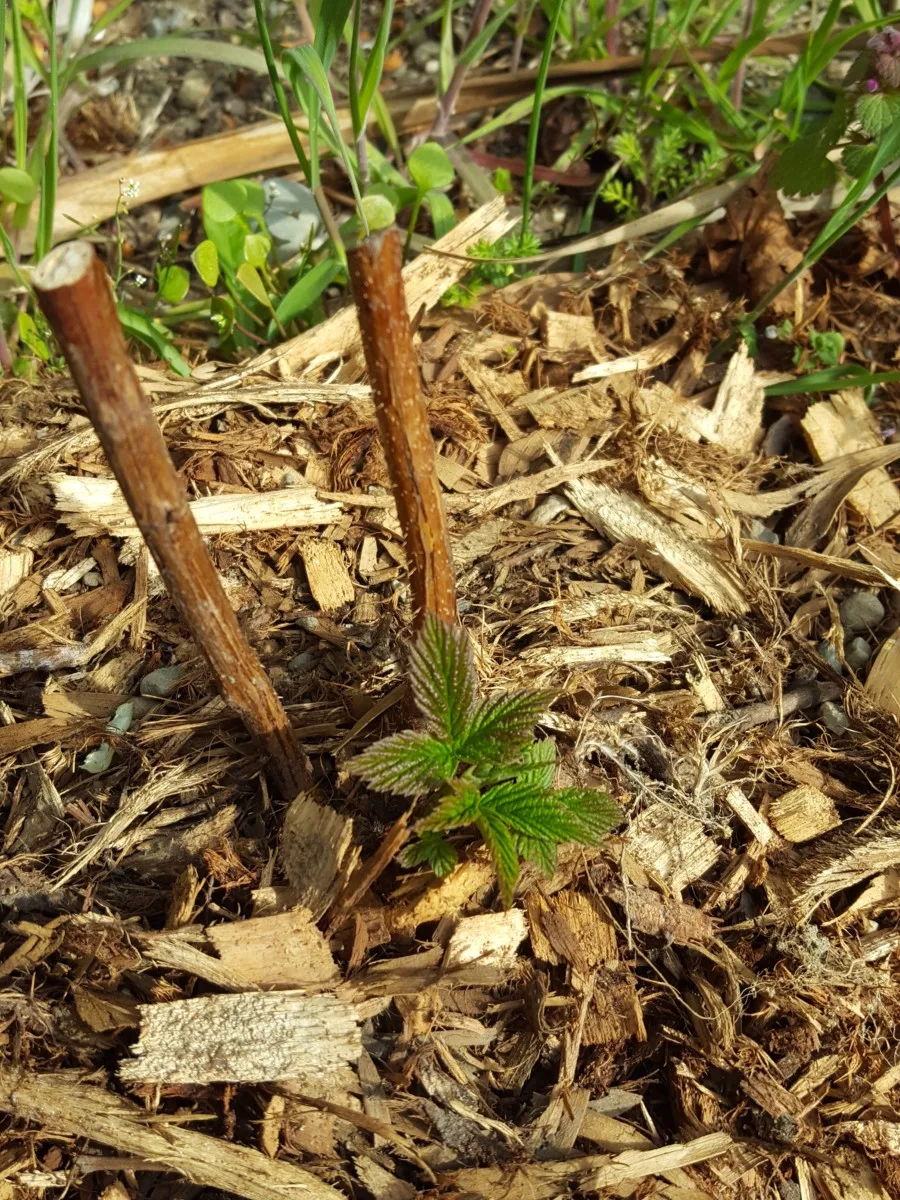
The thing is, if you leave too many suckers in the ground, you’ll end up with too many canes, which means overcrowding, a little bit of light and a lot of competition.
However, if you have space to extend your raspberry patch, consider removing those suckers and planting them further out.
As long as they are healthy, they can be uprooted, potted, planted elsewhere or gifted to friends, family, neighbors, etc. For sale or trade, there’s always a way to make ends meet on your homestead.
3. Mulch Your Raspberry Beds
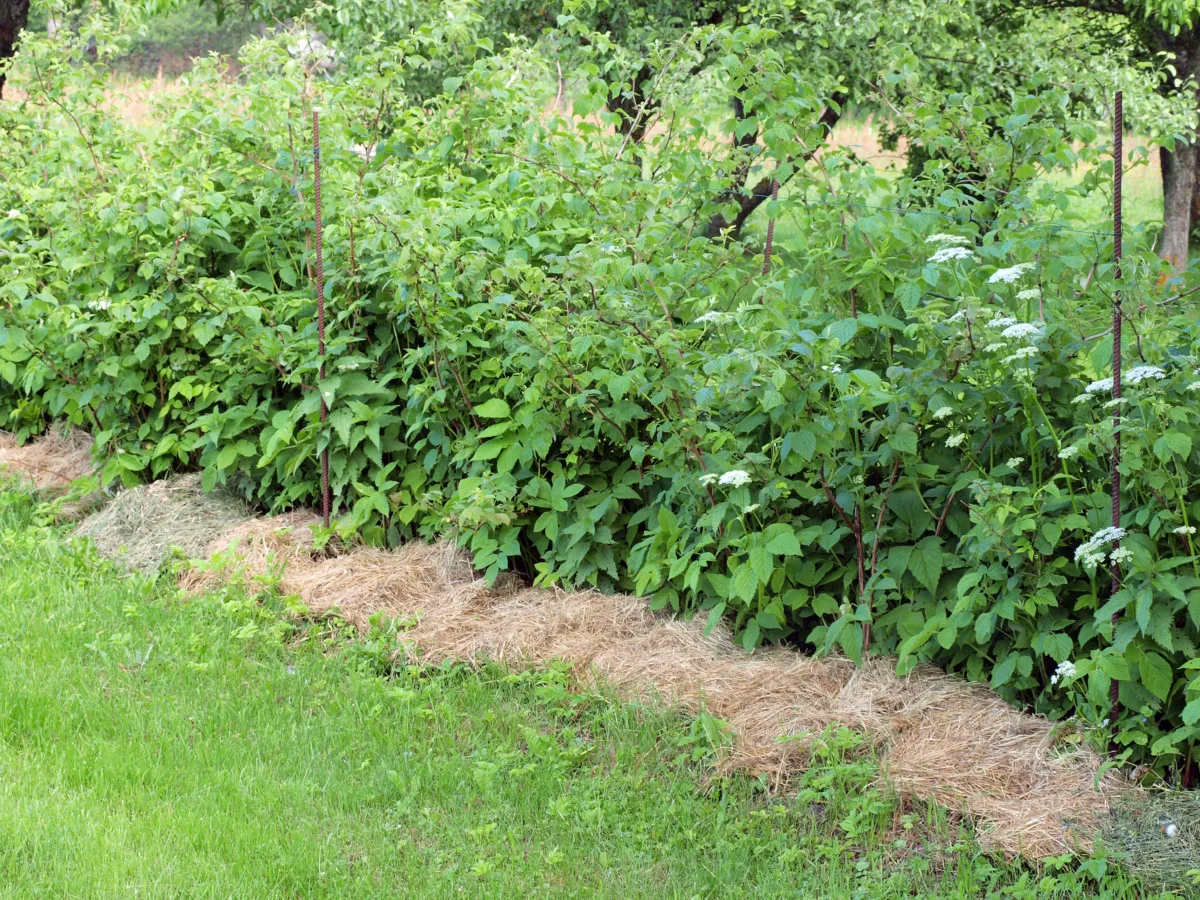
You probably already know by now that raspberries perform best under full sun – there’s no secret about that. All this means is that your raspberries demand at least 6-8 hours of sunlight each day.
But, have you given enough consideration to the ground they sit in and on. We sometimes tend to think of raspberries as invasive plants that grow in forest clearings, as well as being forest edge plants. This in fact makes them a perfect perennial to add to your forest garden.
Yet, cultivated varieties are a wee bit pickier about the soil that surrounds their roots.
Raspberries will grow to their finest in a sandy-loam soil. It also helps to be well-draining and full of organic matter (compost and mulch can help get you there). Even then, the soil is ideal at a pH of 6.0 to 6.7, on the slightly acidic side.
Planted in sandy soils, they will likely outperform those in wet clay soils. Just a few hidden secrets for the budding raspberry grower to keep in mind.
The key to mulching raspberries for your best ever raspberry harvest:
While we don’t often have a lot of control over soil conditions, there is always something we can do about mulch. Not only does mulch block out weeds, it also keeps moisture in the ground. At the same time it breaks down slowly over the course of a year, turning into quality nutrients for the soil, and thus for your future abundance of raspberries.
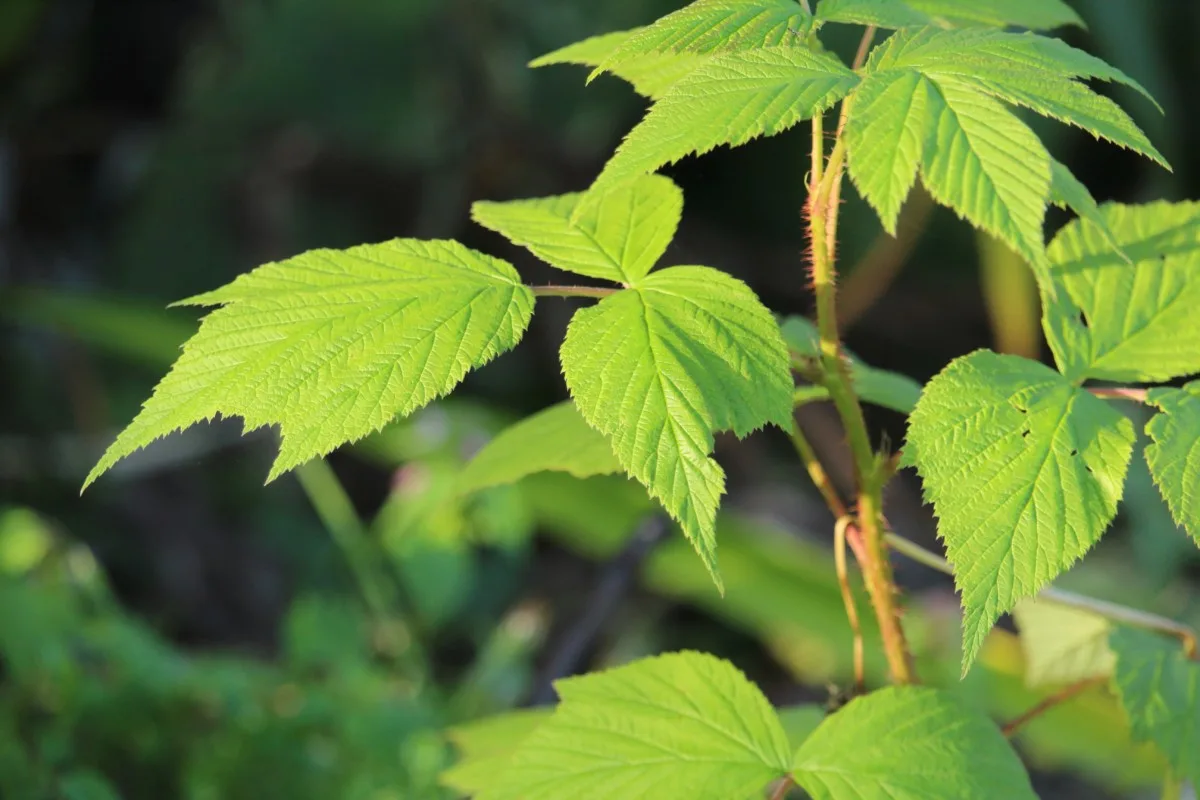
First choose the mulch of your liking or availability:
- straw (best if it is organic)
- hay
- chopped cornstalks or corncobs
- sawdust or wood chips
- leaf mold
- grass clippings
Then apply the mulch to the right depth. Naturally, this will depend on the type of mulch you are using.
A general rule of thumb suggests that wood chips or sawdust be applied no deeper than 3-4″.
For straw or hay mulch, never exceed a depth of 8-10″. Too much can be a bad thing, as it may prevent new shoots from growing through.
Don’t forget that you can apply mulch at the beginning, middle and the end of the season. As long as you can reach under the canes, go ahead and toss more ground cover in, since it gradually decomposes over time.
4. Fertilize Your Raspberry Canes
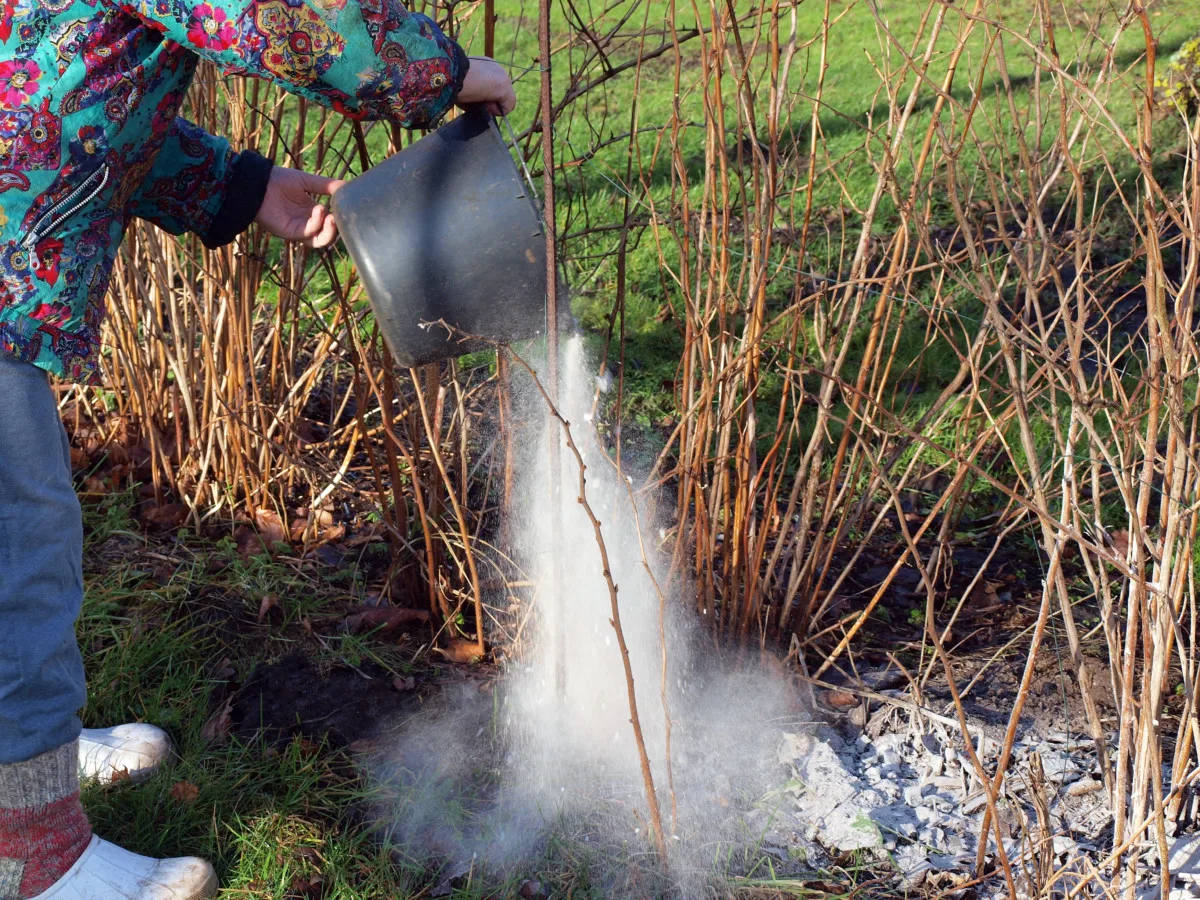
Outside of pruning, mulching and irrigation for your best ever raspberry crop, it’s wise to implement some sort of fertilizer into your berry-care routine.
Organic fertilizer should be applied at the beginning of the growing season, at least once, if not twice. But, as soon as the berries begin to flower, put an end to the fertilizing and let them consume the nutrients they’ve already been fed. With too much nitrogen, they’ll begin to stimulate leaf growth, which is great if you want to harvest a bunch of leaves for raspberry leaf tea, but not so wonderful for the berries.
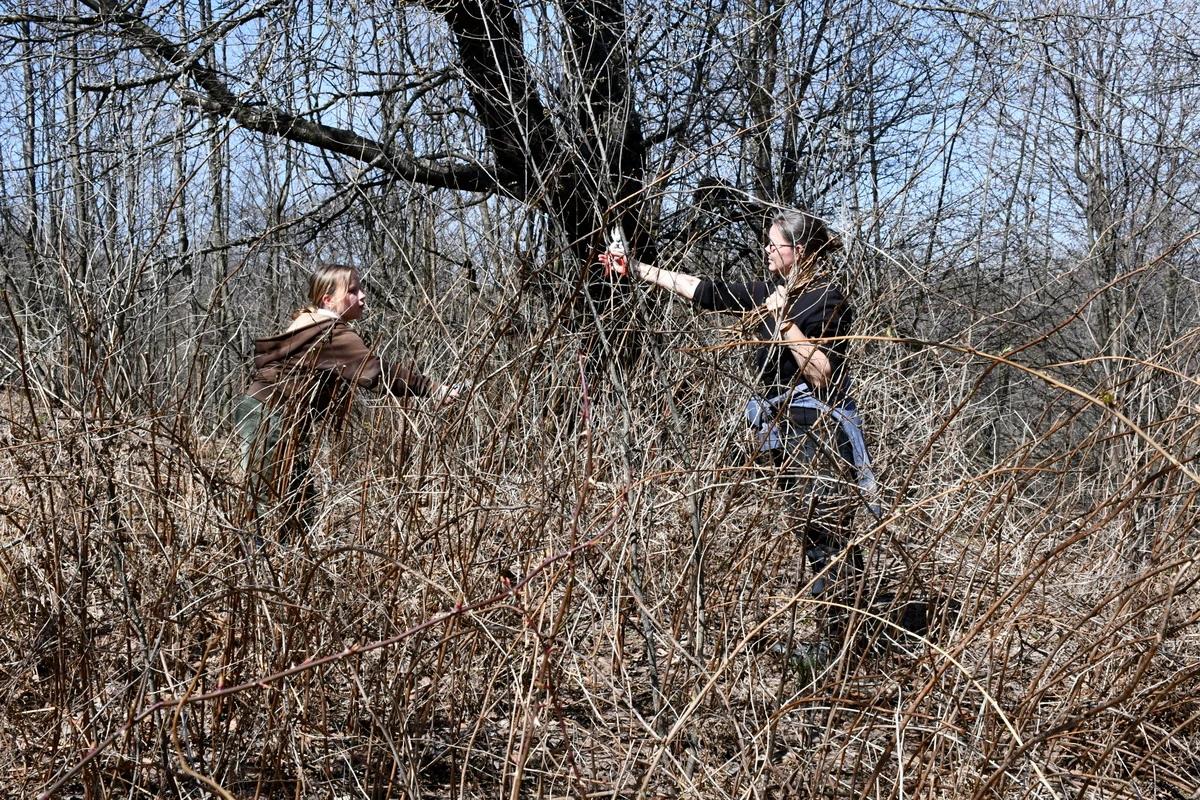
Tracey has an informative article on the 9 best organic fertilizers for your garden plants. Start there to discover what you may already have on hand, or find out what you may need to pick up from the garden store.
Chemicals are unnecessary to use when it comes to growing raspberries.
Put simply, there are plenty of reasons to avoid using them at all.
Straightforwardly: avoid them altogether by mulching, implementing a mechanical pulling of weeds, and adding some compost at the beginning of the season.
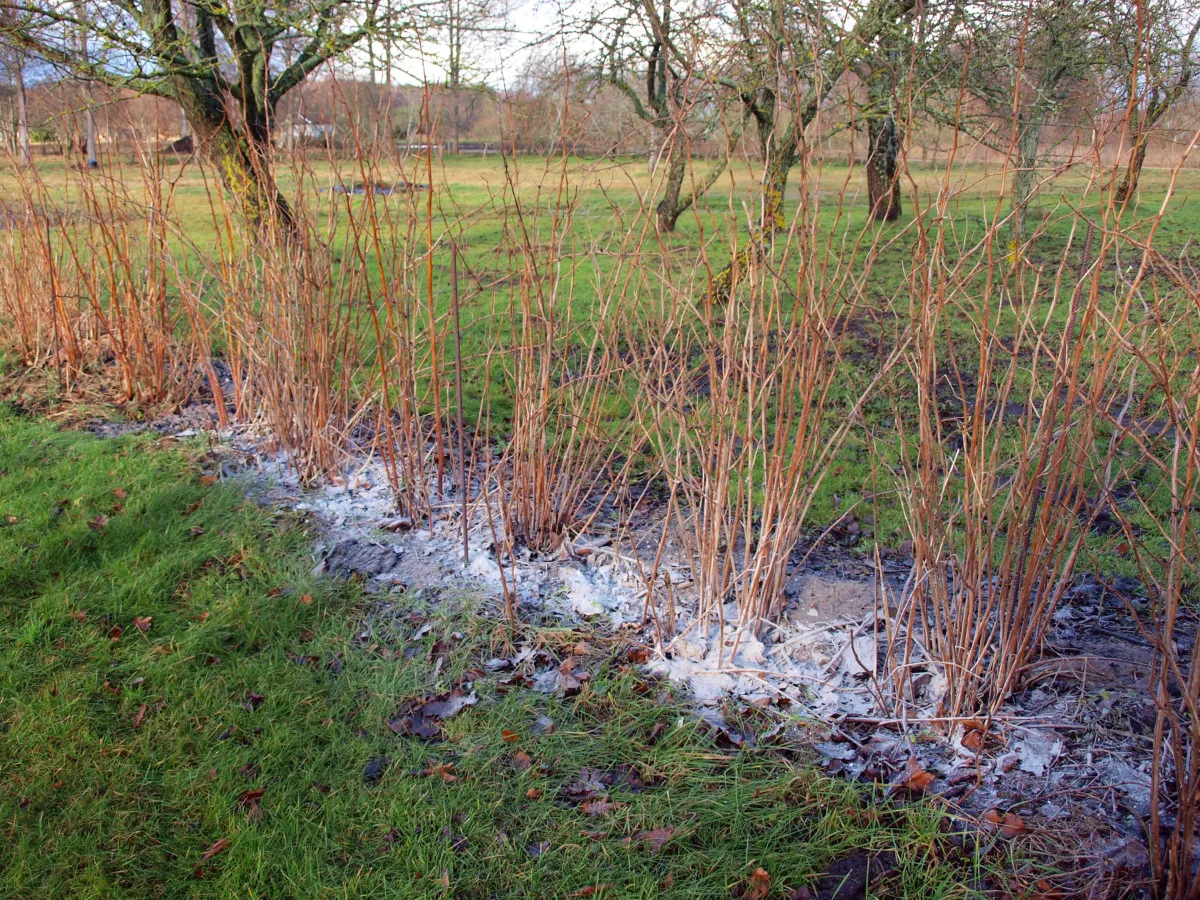
You don’t need to get too fussed about fertilizing raspberries, as long as you provide some well-rotted manure in spring, you are almost always guaranteed a good crop.
5. Know How Old Your Raspberries Are
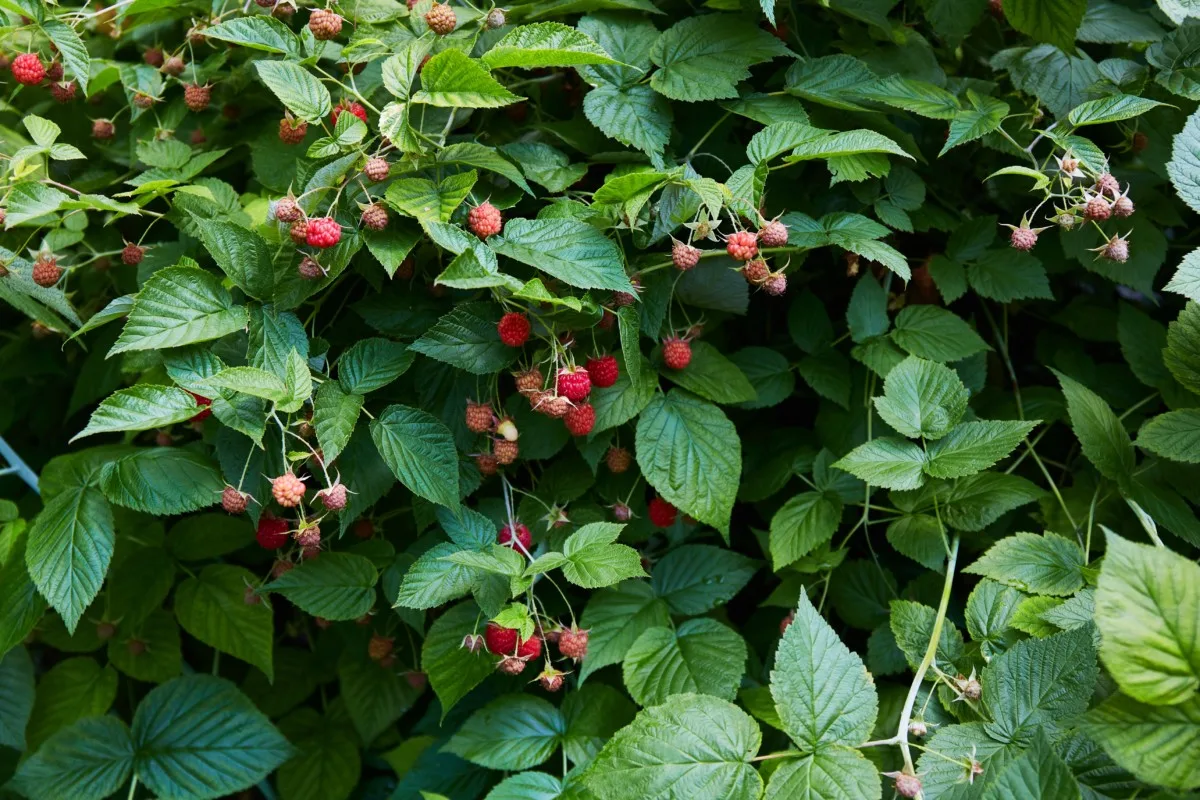
Knowing the age of your raspberries is important for two reasons:
- it let’s you know when to expect a harvest
- and it signifies the level of need for planting new canes
If you move into a new home with a raspberry patch in the backyard, chances are that you won’t know how long the canes have been there. Or when they were last pruned. Scroll up to tip number one again for when and how to prune, if that’s the case.
Otherwise, know that raspberry (Rubus idaeus) plants produce beautiful berries for about 10-15 years. In some instances they can live longer, but in general practice, it’s best to replace old canes from decade to decade.
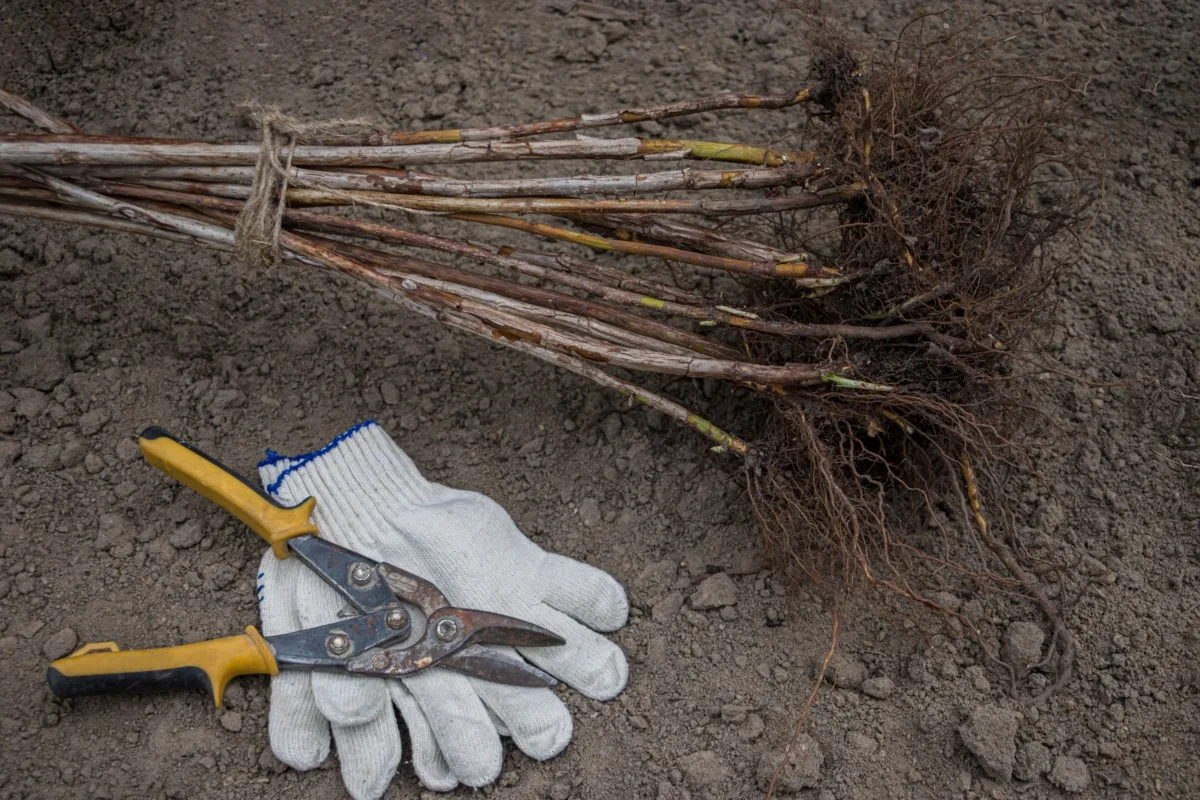
When to expect berries: primocanes vs. floricanes.
Regarding longevity, raspberries are considered a perennial. This is strictly because the roots can thrive for many years. As for the stems (the canes), these are considered biennial. In this case they survive for two seasons.
Not to confuse you, but most varieties of raspberries can only produce fruit on floricanes – the second-year canes, or rather the previous season’s growth. This raspberry crop is the one that arrives a year after planting.
Other varieties can produce fruit on both first and second-year canes. These are everbearing raspberries that have two crops in one year. The first harvest on the tips of primocanes (the current season’s growth), and the second harvest starting in late summer on the floricanes.
6. Provide Pollination Support
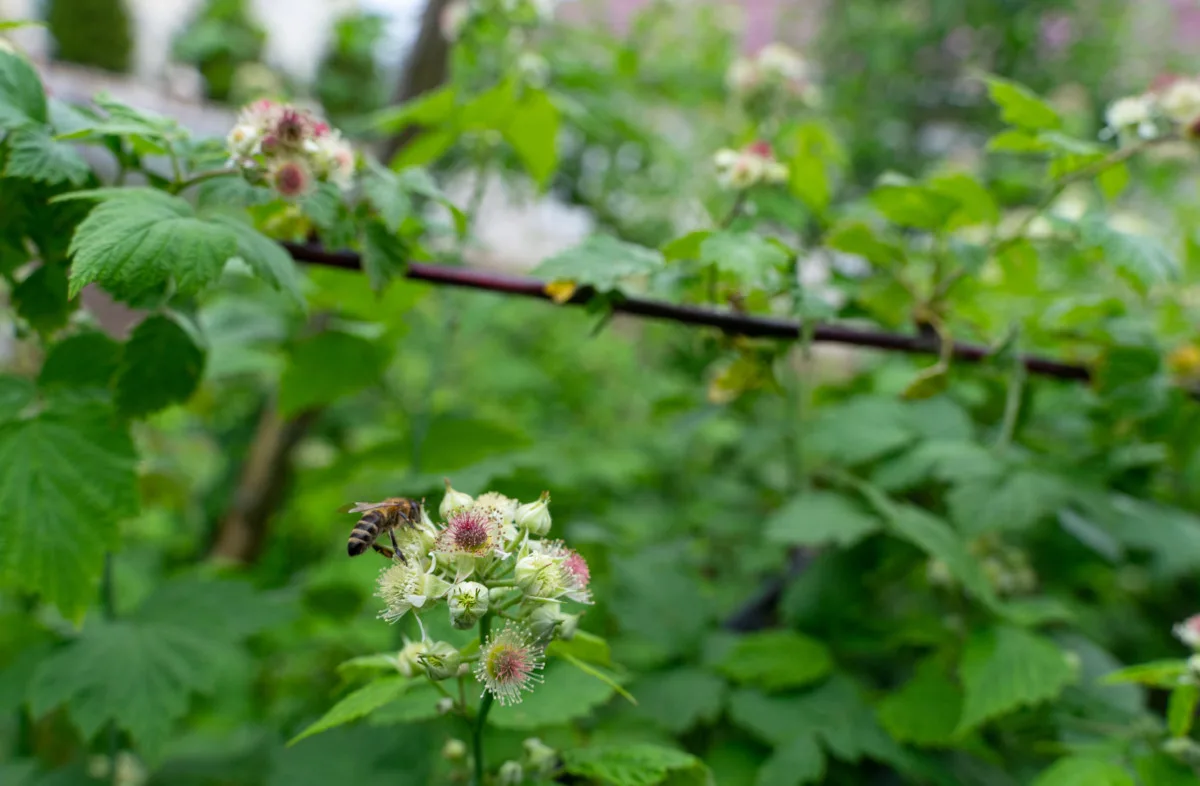
A wild garden is a diverse garden. And a rewilded garden is an ecosystem in itself.
No matter what you grow in your garden, you’ll always need some sort of pollination support. After all, the bees and other beneficial insects have a need for all that pollen. So, let them have it.
All you really need to know, is that raspberries are self-pollinating. In the simplest of terms, you only need one bush to produce fruit. Cross-pollination isn’t essential, though it never hurts to grow two varieties in close proximity to one another in the quest for an abundant and juicy berry crop.
At the same time you may be surprised to find out that bees account for 90-95% of raspberry pollination.
This makes perfect sense when you realize that each raspberry flower contains about 100 pistils which all must be pollinated to make a perfectly formed fruit.
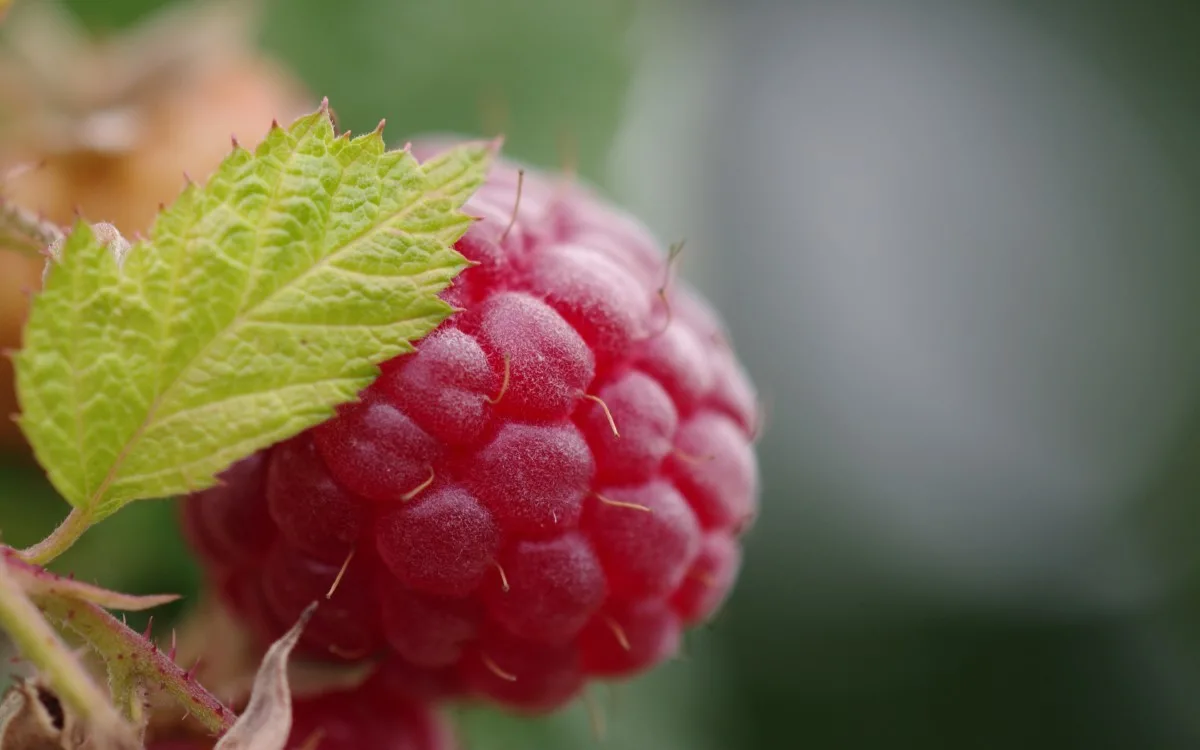
Have you ever harvested berries in the wild and gotten disappointed by the half juicy, half dry berries? That was likely the result of insufficient pollination.
If there are beekeepers in the area, they’ll come to the blossoms on their own. If not, you may want to consider becoming a beekeeper yourself. For a large raspberry patch of one acre, one hive will be enough to get the job done.
Here are three things you can do to support pollinators: use plants to attract pollinators, keep a hive or rent one when your berry patch is in bloom. Or just leave the pollination up to nature.
7. Provide Support For All Raspberry Canes
Because berries grow so well out in the wild, we tend to think of them as unruly plants that grow however they want to grow. But how do you want them to grow?
Have you ever encountered a more orderly berry patch? What did you see there?
I’m betting that a trellis was involved.
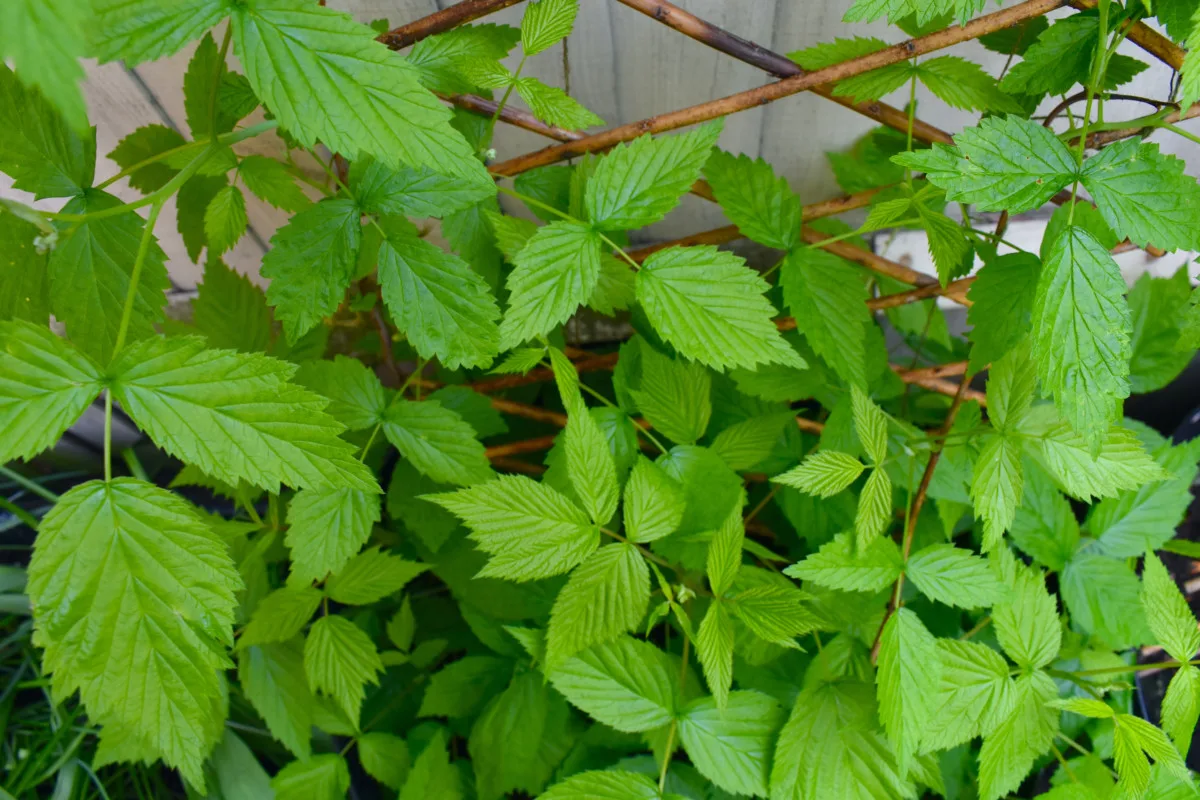
In the most ideal case that canes become laden with juicy fruit (every raspberry grower’s dream) the canes begin to droop. So, in order to keep fruit off the ground and at a nice harvestable level, all you need to do, is start with a trellis.
Given that a 25′ row of red raspberries can produce 15-20+ pounds of berries a year, finding a way to support them is a beneficial thing.
There are two primary ways to do this: with a temporary trellis or with a permanent trellis.
Temporary Trellis for Raspberries
If you are late to the idea of putting in a trellis, know that a very simple one can quickly be constructed out of posts and natural twine. Wire can be used in place of the twine for a slightly longer-lasting trellis. This will be just enough support for fall-bearing raspberries, making fruit cleaner and easier to pick.
Permanent Trellis for Raspberries
If you’ve put in a new raspberry patch, you may want to consider your harvest for the long haul. A two-wire trellis is a thing of beauty. Not only does it make harvesting easier, it makes pruning, mulching and weeding less complicated too. You’ll need some sturdy posts, enough wire for two lengths of your raspberry row and ties to secure the growing canes.
This more orderly way of raising canes will allow more light to penetrate through the lower part of the raspberry hedge. Which, in turn, results in a greater amount of shoots – and a more generous amount of berries.
What are you going to do with a bumper crop of raspberries?
Freeze a bunch, preserve even more or eat them straight from the cane? There’s no secret to consuming them. Any way you like will do the trick.
More Raspberry Growing and Preserving Ideas
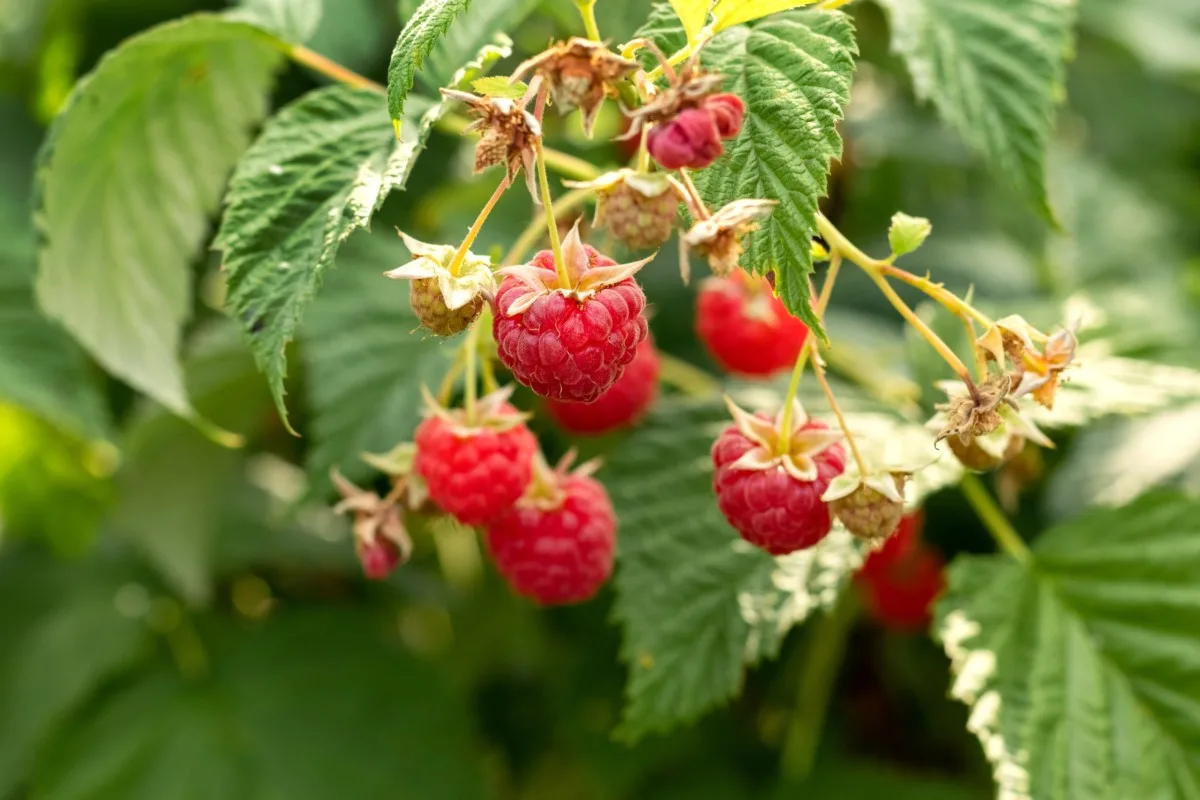
How To Start New Raspberry Canes For A High-yielding Berry Patch
How To Prune Raspberries For A Bumper Harvest Year After Year
How To Grow Basketfuls of Raspberries
Delicious Raspberry Jam Recipe (Without Pectin)
Simple Homemade Raspberry Syrup With Honey

Get the famous Rural Sprout newsletter delivered to your inbox.
Including Sunday ramblings from our editor, Tracey, as well as “What’s Up Wednesday” our roundup of what’s in season and new article updates and alerts.

